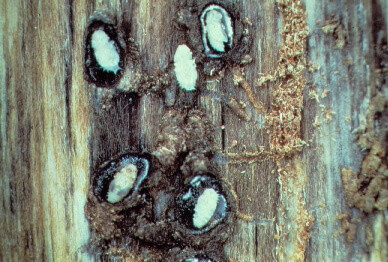
Mountain pine beetle population dynamics in new habitats and climates: The potential for eastern and northern spread in Canada
Warmer weather is driving MPB range expansion, but how well will the beetle take hold in novel habitats?
This project will quantify the relationship between tree temperature and mountain pine beetle survival. It will provide the biological knowledge and an effective decision-making tool that can be used to develop effective management practices and strategies to slow the spread of MPB in Canada. Determining MPB’s ability to survive and spread will assist Alberta forest management.
Complex phenology may affect the MPB’s ability to survive, aggregate and reproduce. These factors will ultimately determine its eruptive and spread potential in the boreal forest. Variation in development and survival can not be predicted using the coarse spatial scale of available weather station data. Therefore, in the summer of 2010 we initiated a study that quantifies variation in MPB development and survival and relates it to under-canopy and under-bark temperatures in three geographic areas.
This project, led by Dr. Kathy Blieker of the Pacific Forestry Centre, enhances our understanding of MPB biology and the impact of the beetle in Alberta. In addition, study results will have implications for forest management and options associated with MPB infestations. It will provide the biological knowledge and an effective decision-making tool that can be used to develop effective management practices and strategies to slow the spread of MPB in Canada.
This work was foundational to another project beginning in 2013 on MPB cold tolerance.
Objectives
- Quantify variation in MPB development (phenology), winter survival, mortality and attack behaviour as it relates to under-canopy and under-bark temperatures and host tree characteristics in populations in the beetle’s new habitat and traditional range;
- Quantify under-canopy and under-bark temperatures in threatened stands (eastern AB, SK) in advance of MPB to more accurately assess the risk of eastern spread;
- Validate and re-parameterize the Powell-Régnierè process-based climatic suitability model for MPB (an integrated ecophysiological model, which couples phenology and overwintering survival) using the relevant field data for application in AB and northern BC to assess the risk of spread;
- Provide data for susceptibility and connectivity analysis of jack pine habitat to MPB.
The project kicks off, led by Kathy Bleiker
All measurements and samples completed at 13 sites
Insect samples and temperature files are being processed
Temperature files collated and insect samples processed
Development data analysis completed, report accepted
The 3 year project finishes on schedule
M
N








